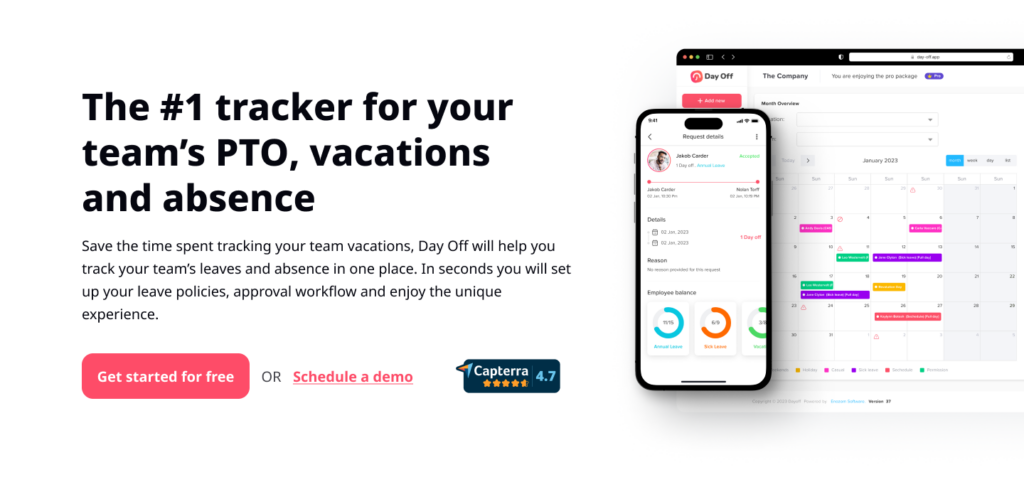In today’s dynamic human resources environment, the implementation of Paid Time Off (PTO) policies is crucial in shaping an organization’s work culture and enhancing employee contentment. A well-designed PTO policy not only adheres to legal requirements but also promotes the well-being and efficiency of employees. This article explores the different facets of PTO, providing valuable guidance and tips for HR experts and business executives.
What is Paid Time Off (PTO)?
Paid Time Off is a policy that combines traditional leave types – vacation, sick leave, personal days, and sometimes even holidays – into a single bank of days that employees can use at their discretion. This modern approach to leave is gaining traction due to its flexibility, which caters to diverse employee needs.
Benefits of PTO
- Increased Flexibility and Autonomy: PTO empowers employees to use their leave as they see fit, enhancing their sense of control and satisfaction.
- Simplified Administration: Consolidating different leave types into one category streamlines HR processes.
- Improved Employee Well-being: PTO encourages employees to take necessary breaks, reducing burnout and promoting work-life balance.
- Attract and Retain Talent: A competitive PTO policy can be a key differentiator in attracting and retaining top talent.
Designing a PTO Policy
Assessing Company Needs and Culture
Understand the unique needs of your workforce and the overarching goals of your organization. Are you aiming to foster a culture of flexibility, or is predictability more critical? The answer will shape your PTO policy.
Benchmarking
Research industry standards and competitor policies. This data will help ensure your policy is competitive and aligns with market expectations.
Legal Compliance
Ensure your PTO policy complies with local and national employment laws, including minimum leave requirements and payout obligations upon termination.
Balancing Flexibility and Structure
While flexibility is a key advantage of PTO, some structure is necessary. Define clear guidelines on accruing, using, and carrying over PTO days.
Communication and Implementation
Communicate the policy clearly to all employees. Consider training sessions or detailed guides. Ensure your HR team is equipped to manage the policy effectively.
Addressing Common PTO Challenges
Preventing Abuse
Set clear expectations and monitor usage patterns. Encourage a culture where taking leave is normal but responsibly managed.
Ensuring Coverage
Implement a system for managing coverage during employee absences. This might involve cross-training or temporary reallocations of responsibilities.
Managing Peak Times
Establish guidelines for requesting PTO during high-demand periods. Consider implementing a fair rotation system or blackout dates for critical business times.
Measuring the Impact of Your PTO Policy
Regularly assess the impact of your PTO policy on employee morale, retention, and productivity. Surveys, focus groups, and HR analytics can provide valuable insights.
Different Countries PTOs’ Policies
Paid Time Off (PTO) policies vary significantly across countries, reflecting diverse cultural norms, labor laws, and economic structures. Here are examples of PTO policies from different countries, illustrating this variety:
- United States: The U.S. does not have a federal statutory minimum for paid leave. PTO policies are largely at the discretion of employers. The average amount of PTO offered by employers typically ranges from 10 to 20 days per year, often increasing with the length of employment.
- Brazil: In Brazil, employees are entitled to 30 calendar days of paid vacation after every 12 months of work, with an additional one-third of their monthly salary as a vacation bonus.
- France: French workers are entitled to a statutory minimum of 25 paid vacation days per year. Additionally, they benefit from 11 public holidays, and many employees also receive RTT (Reduction of Working Time) days, which compensates for working more than 35 hours per week.
- Japan: Employees in Japan who have completed at least six months of service and have worked at least 80% of their working days are entitled to 10 days of paid leave. This entitlement increases with the length of service, up to a maximum of 20 days per year.
- Australia: Australian employees are entitled to four weeks of annual leave per year. Additionally, they have access to personal/carer’s leave, compassionate leave, and public holidays.
- Germany: In Germany, employees are entitled to a minimum of 20 working days of paid vacation per year, based on a five-day working week. Many companies offer more than this statutory minimum.
- Canada: Vacation entitlement in Canada varies by province, but employees typically receive two weeks of paid vacation per year after one year of employment, increasing to three weeks after six years with the same employer.
Maximizing Efficiency and Transparency with a Day Off Leave Tracker

Day Off Leave Tracker is an essential tool in managing Paid Time Off (PTO) policies effectively. By systematically recording and monitoring employee leave days, this tracker offers several benefits:
- Ensures Compliance and Fairness: Helps maintain adherence to company policies and legal requirements, ensuring equitable distribution and use of leave days among employees.
- Enhances Planning and Coverage: Facilitates better workforce planning by providing visibility into when employees are taking leave, allowing for adequate coverage and resource allocation.
- Increases Transparency: Keeps employees informed about their remaining leave balance, promoting transparency and reducing confusion or disputes about leave entitlements.
- Improves Employee Satisfaction: A clear and efficient tracking system can enhance employee satisfaction, as it simplifies the process of requesting and managing time off.
- Aids in Data Analysis: Provides valuable data for HR to analyze patterns in leave usage, which can inform policy adjustments and workforce management strategies.
Conclusion
A well-crafted PTO policy is more than just a compliance requirement; it’s a strategic tool in fostering a positive work environment and a healthy organizational culture. By understanding the needs of your workforce and balancing them with the goals of your organization, you can develop a PTO policy that benefits both employees and the business.
As the workplace continues to evolve, staying informed and adaptable in your approach to PTO will ensure your policy remains effective and appreciated by your workforce.
